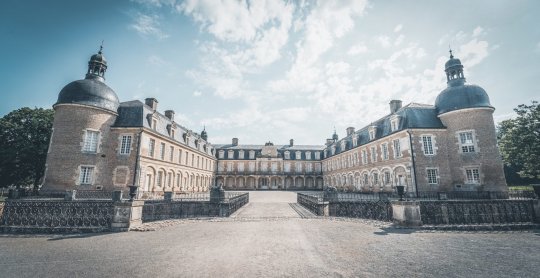
Historical and touristic visits
Exceptionnal natural sites, historical monuments, attraction parcs, museums…
This is the southern Burgundy tourist office application to connect to on your smartphone.
It hosts a huge amount of information, with maps, to guide you to wineries, restaurants, tourist attractions etc.
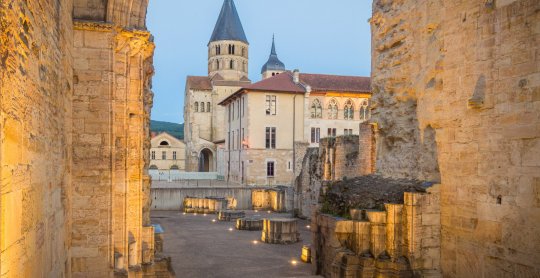
Cluny Abbey Remains of a Romanesque religious complex
On the eve of the second millenium Burgundy was a region of high spiritual importance due to Cluny Abbey. This Benedictine abbey, built in the 10th century, was the centre of the religious world and the church was no less than the largest in the Christian world ! Destroyed during the Revolution, the abbey lives today only through its impressive remains and an archeological museum that allows visitors to imagine what it was like in its glorious past.
Rue du 11 Août 1944, 71250 Cluny
Tél. : +33 (0)3 85 59 15 93
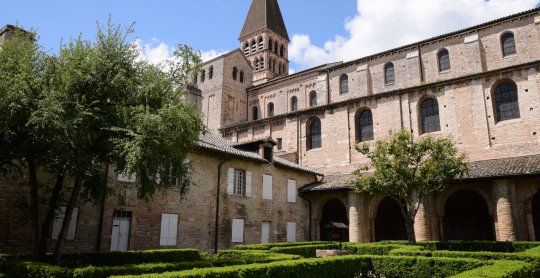
Tournus Abbey Former Benedictine monastery
The Abbaye Saint Philibert, built before the 10th century, is a Must visit. Browse the narthex and nave: the power of their broad pillars contrasts with the delicacy of the pillars of the crypt.The church is not the only monastic treasure, the cloister, the refectory, the cellar and the chapter house form a coherent whole. Long of 33 meters, the refectory hosted a tennis court in the seventeenth century! The abbey houses the International Centre for Romance Studies (CIER). All summer, classical music concerts alternate with art shows ...
12, place des Arts 71700 Tournus
Tél. : +33 (0)3 85 51 03 76
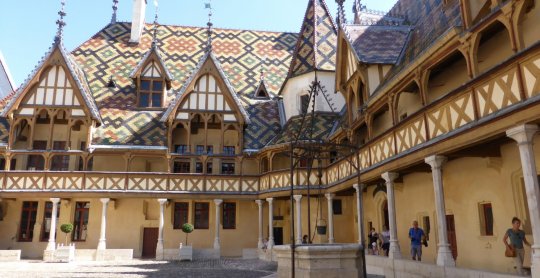
Hospices de Beaune One of the most emblematic sites of Burgundy
Famous for their auction of wines each year in November, the Hospices de Beaune is, with its marvellous varnished coloured tile roof, one of the most famous sites to visit in Burgundy. Apart from it’s own history which is fascinating, the Hospices de Beaune also houses some very fine paintings with amongst others ‘The last Jugement’ by Roger van der Weyden, the leader of religious painting in the 15th century.
Rue de l'Hôtel Dieu, 21200 Beaune
Tél. : +33 (0)3 80 24 45 00

Château de Cormatin One of the most elegant chateaux in Burgundy
Built in the 17th century on the remains of a 13th century castle, the Château de Cormatin is without a doubt one of the most elegant châteaux in Burgundy. Its truly beautiful gardens, which include a maze, were highly appreciated notably by François Mitterand and Alphonse de Lamartine. In the summer the château holds a festival in its theatre called ‘Rendez-vous de Cormatin’.
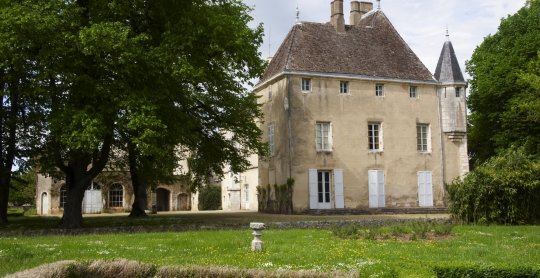
Château de Germolles Germolles, the only princely palaces of the Dukes of Burgundy
In 1380, Philip the Bold (Philippe le Hardi), Duke of Burgundy, bought the stronghold of Germolles for his wife Margaret of Flanders (Marguerite de Flandre). The Duchess transformed it into a luxurious home with the help of the finest artists of the Burgundian School (Claus Sluter, Jean de Beaumetz).
The tour includes the cellar, the lower chapel, the two towers guarding the entrance which are the remains of the original fortress, the great reception room (salle d'honneur), the ducal chapel and apartments, as well as those of the courtiers. The painted and sculptured décors, including the floor tiles, demonstrate the quality of the château. The hamlet adjoining the château and a 19th century park set out in the English style complete the setting.
Germolles is not only one of the few palatial and princely residences of that time in France but also the only country estate (demeure de plaisance) of the Dukes of Burgundy that has been preserved so extensively.
Tél. : +33 (0)3 66 88 33 31
100 Place du 5 septembre 1944,
71640 Mellecey
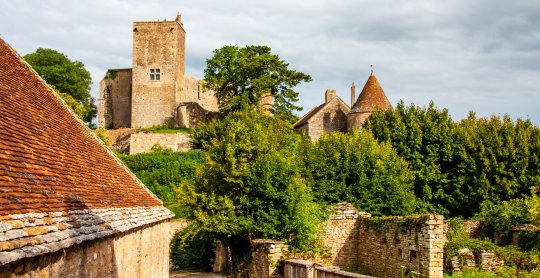
Medieval village of Brancion and its Castle Famous for its strategic location and its history
Brancion (tenth, twelfth, fourteenth) is the largest stronghold of southern Burgundy. Famous for its strategic location and its history. Jocerand Brancion, companion of Saint Louis was killed at the Battle of Mansura.Châtellenie Ducale (late thirteenth) and Royale, it remained a living example of military architecture of the Middle Ages.
This Burgundy village where time seems to stand still will seduce you with its charm and calm. Do not miss the view from the chapel and the guided tour of the Castle.
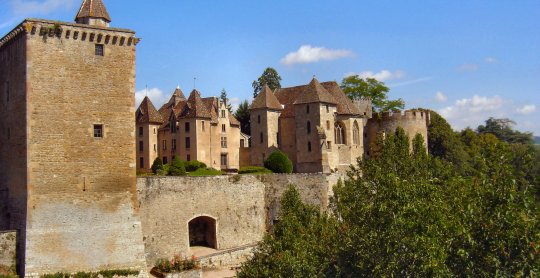
Château de Couches Medieval fortified castle
Clinging to its rock, the Château de Couches soars up amidst the green and rolling landscape of the vineyards of the ‘Côte Chalonnaise’. Access is by a drawbridge that stands as witness to the defensive role that the château had in by-gone days. Today it is possible to visit the chapel, the prison and the square dungeon that goes back to the 12th century.
Restaurant and wine tourism on site
71490 Couches
Tél. : +33 (0)3 85 45 57 99
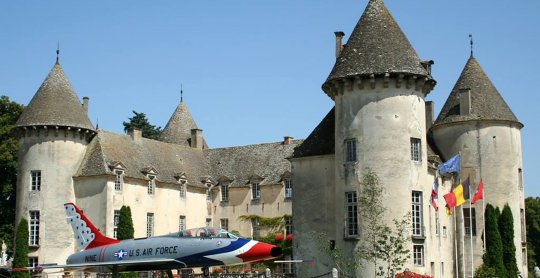
Château de Savigny lès Beaune Prestigious Castle
14th century mansion, the castle of Savigny, its courtyard and its park, propose to you several museums in one! Hundreds of models: Abarth race cars, motorcycles, fighter jets and helicopters alongside the theme of firefighters, that of straddle tractors or that of wine and wine equipment ... You can even taste the wines of the estate in the vault of the Little castle!
The website of the Castle does not give much information, but this article found on the web is very good.
Tél. : +33 (0)3 80 21 55 03

Museum of Photography Nicéphore Niepce, inventor of photography
It is at Chalon-sur-Saône that Nicéphore Niepce, inventor of photography, was born. Chalon has dedicated a museum to him and the art he invented. In a beautiful house along the banks of the Saône, a comprehensive collection of cameras is displayed. Throughout the visit, discover the different photographic techniques used to reproduce reality on paper. There are some wonderful temporary photographic exhibitions held here.
28 Quai des Messageries, 71100 Chalon sur Saône
Tél. : +33 (0)3 85 48 41 98
Free
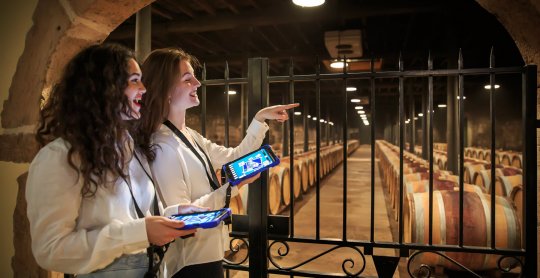
Hameau du Vin Largest and most dynamic Wine museum in the world
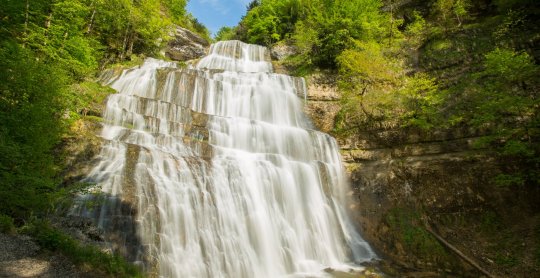
The Hérisson Falls Listed natural site
Two streams join to make a series of waterfalls, each one more beautiful than the last. 31 falls, some over 60m high, go to make up the ‘Cascades du Hérisson’. A waymarked footpath of 3.7 kms allows you to see them all. I go there often with my children. In the summer you can swim in some of them, it’s great fun! To my opinion this is one of the nicest waterfalls in France, so it is worth the more than hour drive…
Maison des Cascades
Lieu-dit Val-Dessus
39130 Ménétrux en Joux
Tél. : +33 (0)3 84 25 77 36
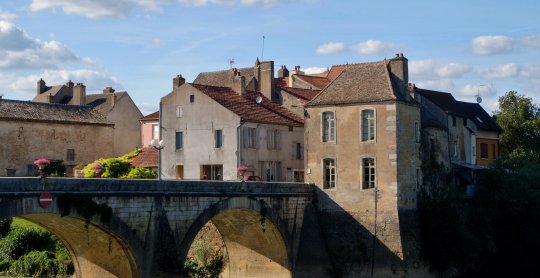
Verdun sur le Doubs A nice and very small market town
Verdun Sur Le Doubs is a nice and very small market town with a weekly market on Thursday morning. Through the Pont St Jean, you can stroll through the Old Verdun. Old streets have sometimes kept their medieval character. A must see at the House of Wheat and Bread: it traces centuries of harvest and bread.
We recommend the restaurant "l'Hostellerie Bourguignonne" and the restaurant "3 Maures" offering quality local cuisine.

Château-Chalon Tour Unique Wine, Fantastic Cheese & Stunning Panoramas
If you wish to broaden your horizon on the trail of discovery we’ll ‘invert’ Horace Greeley’s famous phrase “Go West, Young Man”, and suggest “Go East, Dear Guests”. Whilst probably not on your original compass, this trip takes you east to the beautiful county of the Jura, mixing wine with cheese and a smattering of stunning panoramas.
Morning - Discovering le 'Vin Jaune' and the village of Château-Chalon
Château-Chalon, perched high on the escarpments overlooking the upper valley of the river Seille, is classified as one of the 'Most beautiful Villages in France' and seemingly untouched by time. There are several points and places of interest to explore and discover:
- La Maison de la Haute Seille
- Tourist information centre
- 'Vin Jaune' wine tasting (see here for more details)
- Museographic wine presentation
- Art events
- Boutique with local artisan products
- Artist's ateliers & artisan work-shops
- Wine makers
- Tour Charlemagne (ruins)
- 2 belvederes with panoramic viewpoints over the vines and valleys
- Belvédère de Ménétru
- Belvédère de la Rochette
We'll also talk about the cheese part of this itinerary later… But first some lunch 🙂!
Lunch - Le Bouchon du Château - Château-Chalon, in the village
The Le Bouchon du Château, a convivial, semi-gastronomique restaurant serving traditional dishes with a modern twist, is highly recommended by Christophe.
For reservations go here, or call +33 384 251 860
Afternoon 1 - Waterfall - Baume-les-Messieurs
After lunch, take a 20-minute drive from Château-Chalon to the Cascade de Baume-les-Messieurs waterfall. This scenic route takes you down from the Château-Chalon escarpment and along the valley floor, through the village of Baume-les-Messieurs - also in the 'Most Beautiful villages in France' classification - and up to the end of the 'cwm' (or 'cirque'). A gentle wander around will help 'walk-off' the lunch and hopefully renew your appetite for some cheese !
Afternoon 2 (not before 15h) - Fromagerie H. Poulet - Hauteroche, Grange-sur-Baume
Firstly, a quick explanation of the Jura 'Fruitières'
The Jura is famous for three AOC/AOP cheeses - Comté, Morbier, Bleu de Gex - as well as other kinds such as Raclette and Tomme du Jura. Among the different types of producers are the 'Fruitières' (from the French fructifier, meaning "to bear fruit"). Specific to the Jura region, these dairy cooperatives stand out due to their unique characteristics. Unlike other dairies, fruitières emphasize traditional cheese-making, aging, and refining techniques, combined with the use of hyper-local milk supplied by nearby dairy farmers. Beyond their role as production facilities, these cooperatives serve as cultural hubs, strengthening community ties and solidarity among farmers.
The Fromagerie H. Poulet
Amongst the fruitières, the Fromagerie Poulet truly stands out as an exceptional producer, the epitome of artisanal production and the smallest dairy cooperative cheesemaker in the Jura. 4,000 litres of milk are supplied each day from just 5 farmers in the surrounding villages. Production reaches 70 cheeses daily, including the award-winning AOP Morbier, Comté, Raclette, Tomme du Jura, cream, and hand-molded butter.
A visit here is almost like a pilgrimage and affords a real taste of the 'terroir'! You should have the opportunity to taste some cheeses before buying and staff will be more than happy to tell you of the cheese-making process and answer any questions you may have. You may even be lucky and get to see the ripening cellar.
Address: (see here on Google Maps)
10 Place De L'Église
39210 Hauteroche, Granges-Sur-Baume
Opening hours - please take into account when planning your itinerary:
Monday to Saturday: 09h00 - 12h00 and 15h00 - 19h00
Sundays: 09h00 - 11h30
Website
Tel: +33 384 482 832
lartisanfromager@orange.fr
Belvedere de Granges-sur-Baume
For a 'grand finale' to this itinerary, when you leave the shop, turn left and follow the small path that leads past the church until you reach the Granges-sur-Baume Belvedere (just 50m from the shop). The view over Baume-les-Messieurs village, the valley and gorges is absolutely stunning!
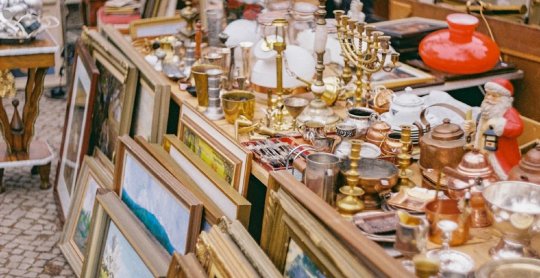
Flea Markets On Sundays
